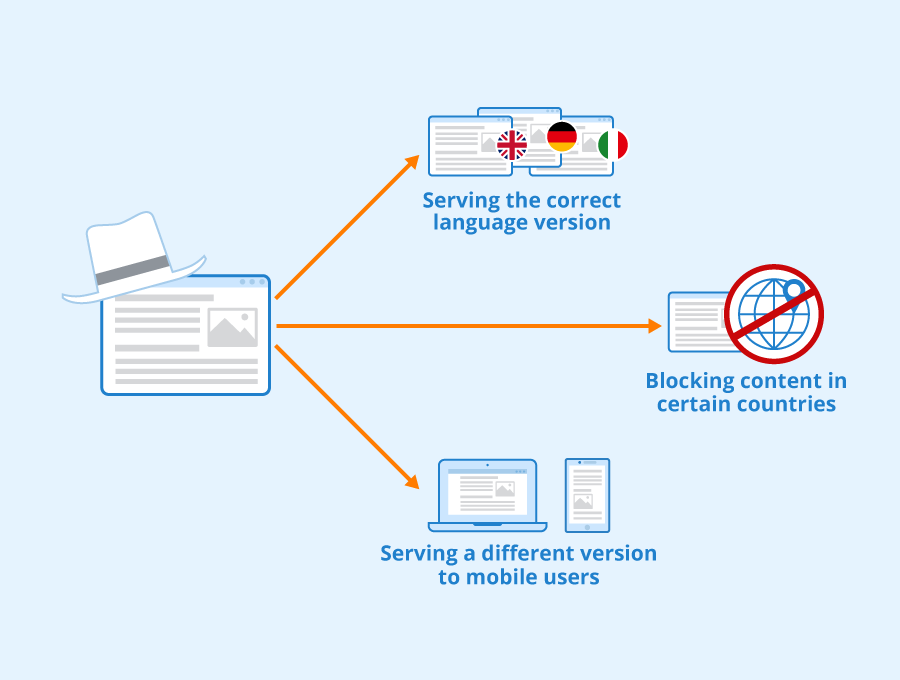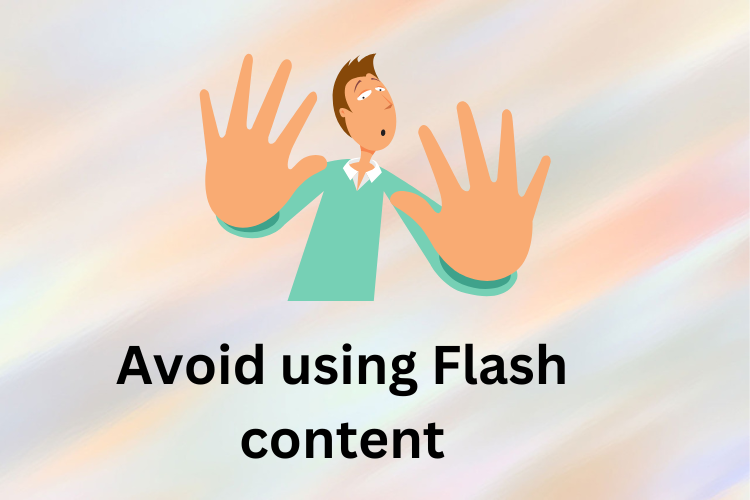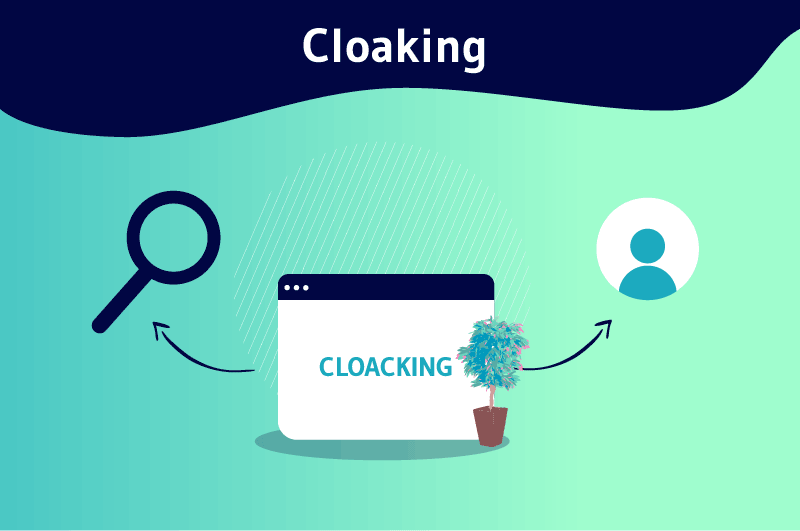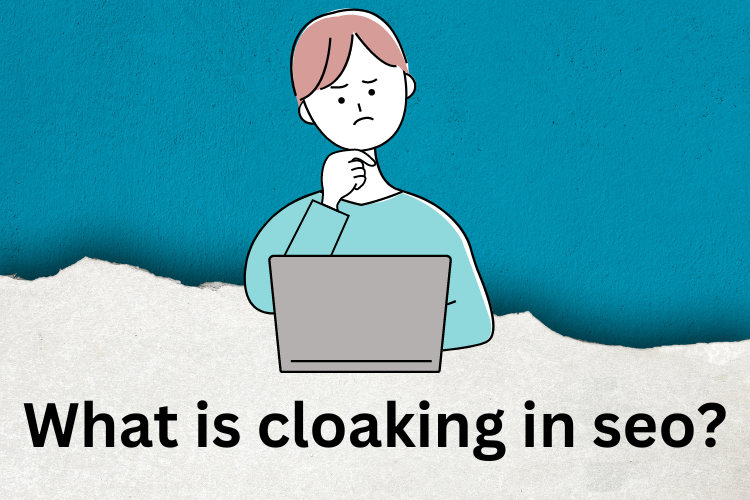In this article, we will explore the concept of cloaking in SEO and examine its impact on our website’s SEO performance.
What is cloaking in SEO?
Cloaking is a Black Hat technique some people use in SEO to show different things to users and search engines on a website.
It’s like wearing a disguise! They might show one thing to users, but when search engines come to look, they see something completely different.
It’s not fair because it tricks both users and search engines.
In short: Cloaking is a black hat SEO technique where a website presents different content to users and search engines.
This is an attempt to deceive search engines into ranking the website higher in search engine results pages (SERPs).

What are Some Cloaking Practices?
Following are the some cloaking practices you should know:
Hidden text:
This is a technique where text is hidden on a page using CSS or other techniques. This text is not visible to users, but it can be seen by search engines.
For example, a website might use CSS to set the text color to the same color as the background color, so that the text is invisible to users.

Imbalance between text and HTML:
This is a technique where the website has a lot of HTML code and not much text content.
This can be used to trick search engines into thinking that the website is more important than it actually is.
Serving HTML to search engines but Flash to users:
This is a technique where the website serves different content to search engines and users.
For example, the website might serve an HTML version of the page to search engines, but a Flash version of the page to users.
This can be used to hide content from search engines that is not relevant to the user’s query.
IP cloaking:
This is a technique where the website serves different content to users based on their IP address.
For example, a website might serve a different version of the homepage to users in the United States than to users in Europe.

image source: seobility.net/en/wiki/Cloaking
User agent cloaking:
This is a technique where the website serves different content to users based on their browser type or operating system.
For example, a website might serve a different version of the homepage to users who are using Chrome than to users who are using Firefox.
JavaScript cloaking:
This is a technique where the website uses JavaScript to dynamically serve different content to users and search engines.
For example, a website might use JavaScript to hide certain content from search engines, but display it to users.
URL cloaking:
This is a technique where the website uses different URLs to serve different content to users and search engines.
For example, a website might use one URL for the homepage for users, and a different URL for the homepage for search engines.
How to Avoid Cloaking
here are some tips on how to avoid cloaking:
Serve the same content to all users:
This is the most important rule to follow.
You should always serve the same content to all users, regardless of how they are accessing your website.
This means that you should not use any techniques to hide content from search engines or users.
Use clear and concise language:
Your content should be clear and concise, and it should be relevant to the user’s query.
If your content is not clear or concise, it is more likely to be flagged as cloaking.
Use a balanced text to HTML ratio:
Your website should have a balanced text to HTML ratio.
This means that there should be a good amount of text content on your website, and not just a lot of HTML code.
Avoid using hidden text:
You should avoid using hidden text on your website.
Hidden text is text that is not visible to users, but it can be seen by search engines.
This is a form of cloaking, and it can get your website penalized by search engines.
Avoid using Flash content:
Flash content is not indexed by search engines, so you should avoid using it on your website if you want your content to be seen by search engines.
Avoid using:
- IP cloaking
- User agent cloaking
- JavaScript cloaking
- URL cloaking
These are all forms of cloaking, and they can get your website penalized by search engines.

Is Cloaking Allowed by Google?
No, cloaking is not allowed by Google. Google has a policy against cloaking, and websites that are caught using cloaking may be penalized.
This means that websites that use cloaking are at risk of losing traffic and revenue.
Why is cloaking not recommended by google?
Cloaking is not recommended by Google because it is a deceptive practice that can mislead users and search engines.
When a website uses cloaking, it shows different content to users and search engines.
This can make it difficult for users to find the information they are looking for, and it can also make it difficult for search engines to rank websites accurately.
In addition, cloaking can be used to trick users into clicking on ads that they would not otherwise click on.
This can be harmful to users and can also lead to financial losses for advertisers.
For these reasons, Google has a policy against cloaking.
If Google detects that a website is using cloaking, it may penalize the website by demoting it in search results or removing it from the search index altogether.
What is cloaking used for?
Cloaking can be used for a variety of purposes, including:
- To improve the website’s ranking in search engines: This is the most common reason why websites use cloaking. By presenting different content to search engines, the website can trick search engines into thinking that the website is more relevant to the user’s query than it actually is. This can result in the website ranking higher in the SERPs.
- To hide illegal or undesirable content from search engines: Some websites use cloaking to hide illegal or undesirable content from search engines. For example, a website that sells counterfeit goods might use cloaking to hide the fact that the goods are counterfeit.
- To trick users into clicking on ads: Some websites use cloaking to trick users into clicking on ads. For example, a website might use cloaking to show a different ad to users than it shows to search engines. This can result in the website generating more revenue from ads.

image source: twaino.com/en/definition/c/cloaking/
Summary:
As I have explained in the above article, cloaking in SEO refers to a technique where different content is shown to search engines and users.
It is a dishonest practice that aims to fool search engines and manipulate search rankings.
Search engines like Google strictly prohibit cloaking as it goes against their guidelines.
They prioritize delivering accurate and relevant results to users. It is important to focus on creating honest and valuable content that provides a positive user experience.
Email me if I have missed anything.
Related to this guide:

